All comments and images by Brainscan. (And also the film clips in the members’ area.)
1932
There was a time … then it all went wrong.
For a time, between 1930 and the middle of 1934, Hollywood passed though the Pre-Code Era, famous for the lax enforcement of The Hays Code, which prohibited so many things. For good reasons, we can push back the unofficial start date of the Era to 1929, right after studios had finished the expensive renovation of theaters (yup, they owned the theaters that showed the movies they made) and the stock market crashed to begin the Great Depression. Hollywood needed the money to keep flowing in, but folks stopped going to movies so often as they had in the past. So, Hollywood needed something to bring folks into the theaters and they learned – not for the last time – that sex sells. Problem was this: SCOTUS had ruled movies unworthy of 1st amendment protection, so some states and many cities rolled out the censors with their sharp knives. Enter the Hays Code, written for the studios and meant to keep censors at bay. For a while, studios ignored the Code and got away with it, thus we have the Pre-Code Era, with movies that tried to show enough to keep the crowds coming but not so much to get the censors’ knickers in a twist.
For a reader of the Funhouse, 1932 was the best of the Pre-Code years, the best of all years for a long, long time. In that year, four of the biggest stars in Hollywood – Jean Harlow (seen below in a publicity still from Red Dust),
Greta Garbo, Claudette Colbert and Carla Bow – would display just enough skin to fit nicely in the Funhouse, had it been around back then. Dolores Del Rio, Nancy Carroll and Ann Dvorak, who were famous at the time, sort of joined them. It was a very good year.
Their scenes, together, illustrate what directors and producers would do to tease audiences. These three rules dominated: 1) Get an actress in flimsy clothes and no under-garments; 2) Get an actress out of her dress to show off her under-garments; 3) Get an actress out of her clothes and into the water.
Jean Harlow in Red-Headed Woman spends a lot of time in under-garments (rule #2),
obey rule #3 – out of clothes and into water. Gotta figure Claudette’s scene in Sign of the Cross would have won the prize for best of the year.
As a bonus, famous fan-dancer Sally Rand appears in Sign of the Cross as a Christian martyr, sacrificed to a crocodile.
Ann Dvorak, in Three On a Match, does rule #2 real well, too, as she relaxes in a flimsy nightgown. This is a great movie, by the way, filled with gritty scenes and a tough message, and Ms. Dvorak is terrific in it. Not sure why she was not a bigger star
The winner in the rule #1 category is Clara Bow in Call Her Savage. In an extended scene that covers 15 minutes of screen time, Ms. Bow rides a horse, has three conversations and plays with a dog in a thin, silk shirt and no under garments. It is a jiggle show 40 years before Charlie’s Angels, and every once in a while, she gets very close to revealing hidden treasures in this one, long scene. Later on in the movie, she opts to parade around in a nightie.
The real fun, however, starts with a cat fight between Clara and Thelma Todd.
In the tussle, we wind up seeing much more than either actress intended, as each combatant seems to go out of her way to rip open the other’s dress. The result is impressive and revealing, and when this movie shows up in HD, I am going to spend a week going back over this one scene.
Clara ends the movie back in a silk outfit. In this scene, without any dialogue, Clara Bow shines again. Asked to deliver lines earlier in the movie, especially ones that prompted the cat fight, Ms. Bow is horribly out of her element. I imagined Katharine Hepburn delivering these same lines and could see how they would draw real blood. Ms. Bow delivers them as though she were reading lines written by someone else, which of course she is, but the point of acting is to make it seem otherwise. The words wind up falling flat and they make her character appear pathetic, not formidable. Silent films were her medium because her face could act. Sad to say, she could not.
My favorite movie of this bunch is Hot Saturday. In a single scene, Nancy Carroll strips out of her dress into a slip
The film clip doesn’t offer much to see, but still is risqué and, therefore, very typical of 1930-34 movies.
The film, itself, looks very much like a play written 320 years earlier by the Bard. It follows the plot of Much Ado About Nothing for much of its length, in that a false rumor started by an evil cad about a woman’s loose morals costs her not only her reputation, but also a husband. Unlike in Much Ado, however, the maligned gal in Hot Saturday does not accept her betrothed’s apology when he discovers the lies behind the rumors, and they do not end the movie as a happy couple. She wins in the end, but on her own terms. She hears about the rumors, realizes why everyone in the town had been treating her so abysmally, says fuck it and goes off to spend the night with the guy she was rumored to have shtupped (Cary Grant). The movie ends with the two of THEM in a car as they ride away to get married. Now, that is a damn good story.
For Scoop’s notes, “continue reading.”
——-
——-
——-
You more savvy types realize that there was some nudity in Hollywood in the silents and early talkies. There were censorship standards set way back in the silent era, established as early as 1922, but the original rules were voluntary and thus often ignored. The so-called “Hays Code,” an elaborately detailed production code consisting of rules for what could and could not be portrayed on screen, was formalized in 1930, but originally lacked any teeth for enforcement. The voluntary compliance (wink-wink!) era came to an end in 1934 when the American Catholic church announced the creation of the Legion of Decency, which encouraged the production of moral films and promptly condemned any film with an immoral message or content. The Legion’s activism hit the film industry in two vulnerable areas. First, the Legion’s threats to boycott objectionable films went directly for the purse strings. Second, the Legion threatened to lobby the federal government for official censorship. The industry’s leaders saw the handwriting on that wall. They knew the Legion could exert a powerful influence over politicians, and they realized that self-censorship was a far more attractive alternative to draconian government interference, so they created a formal procedure to administer the code. All films released after July 1, 1934, had to get script approval before production could begin, and each film was later required to obtain a “seal of approval.” Failure to comply resulted in a $25,000 fine for the studio and a distribution ban upon the non-compliant film. Joseph Breen, new head of the Production Code Administration (which later became the MPAA), was assigned to oversee the process.
The Production Code basically kept nudity out of American movies for approximately the next thirty years. The Legion did not begin to lose its grip on Hollywood until the early sixties when an unfinished 1962 film, Something’s Got to Give, was to have taken on the Code by featuring a skinny dip from Marilyn Monroe. Marilyn’s death temporarily scotched the snake of mainstream nudity, but other films soon took up the baton. There was Jayne Mansfield in Promises, Promises in 1963. Cleopatra featured a modest look at Liz Taylor’s bum in 1963, and The Pawnbroker managed to sneak fairly substantial nudity into arthouse theaters in 1964 despite a “condemned” rating from the Legion. Despite these efforts and a rapidly liberalizing culture in the mid-sixties, it was not until 1968 that the Production Code was officially replaced with the first version of the current rating system.
But that’s a story for another day. Today’s tale concerns not post-Code nudity, but the bit of flesh that snuck in here and there before the Code acquired teeth in July of 1934, a period representing 1920s hedonism and its aftermath. In the early talkies, there were the notorious Fay Wray scenes in King Kong (1933), Claudette Colbert’s breasts in The Sign of the Cross (1932), Myrna Loy’s bath in The Barbarian (1933), full frontal and rear underwater nudity from Maureen O’Sullivan’s body double in Tarzan and his Mate (1934), Hedy Lamarr’s notorious frontal nude scenes and breast close-ups in the Czech-made Ecstasy (1932), and Delores Del Rio’s shapely bum in Bird of Paradise (1932).
And even before that, there was Clara Bow in Wings, a 1927 silent film. That film not only had a brief flash of breasts, but also won the Best Picture Oscar! In fact, that was the very first such Oscar ever awarded, back when it was called “Outstanding Picture.”


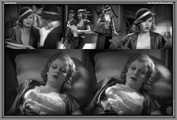
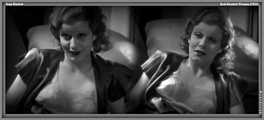
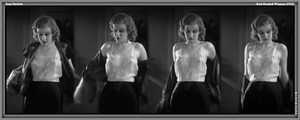
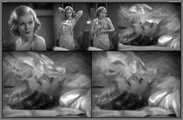
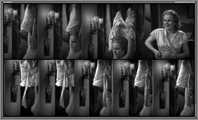
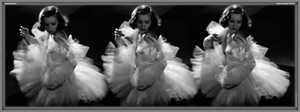
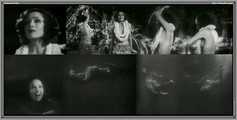
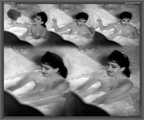
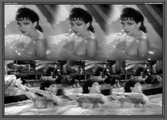
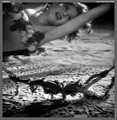
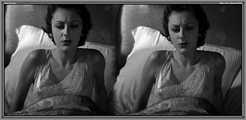
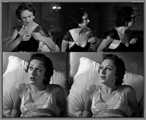
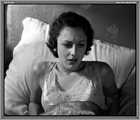
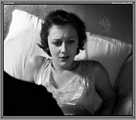
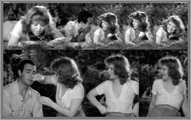
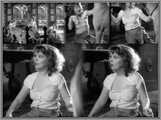
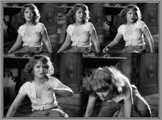
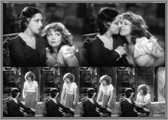
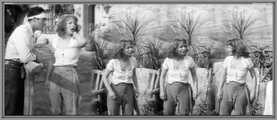
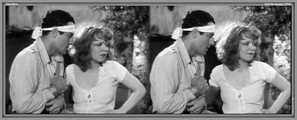

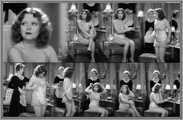
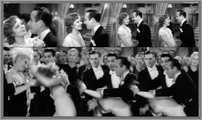
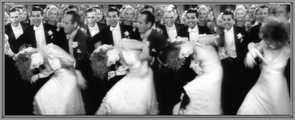
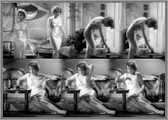
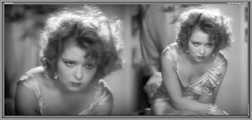
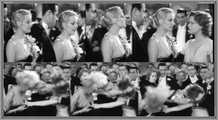


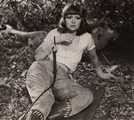
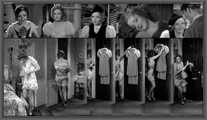
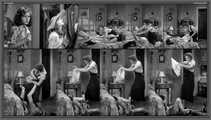
This isn’t really on topic, but speaking of Hedy Lamarr, I just finished reading a book called Deceptions of World War II. The Hedy Lamarr was the name given to a device that caused loud explosive noises and other sounds of weapons of World War II (like diving bombers.) The purpose of the device was the same as Batman’s smoke bomb, if a spy was in a tricky situation, they could set off the device (it was a tiny device and could be easily thrown) and create confusion and havoc and slip away. Apparently it was used on a number of occasions.
The most interesting stories in the book were on a British magician named Jasper Maskelyne. He mainly served in North Africa and helped thwart Field Marshal Rommel from taking the Suez Canal and finally helped the cause in the decimation of Rommel’s army. He and his team were able to create a camouflage and through the use of the magician principal of misdirection he convinced Rommel that the British offensive led by General Montgomery would come from one direction, when it, in fact, came from the other direction. And, he did all of this in the flat and open desert.
An entire book was written on Jasper Maskelyne called The War Magician. The book has been optioned for a film and like a lot of films it’s been in development hell. The interesting thing about this film though is there was a press release in 2015 announcing Benedict Cumberbatch would play Maskelyne. I don’t know that I’ve ever seen a press release on a film that was obviously still in development that mentioned casting. The closest I’ve seen was that Manson Film that was apparently all a scam.
There is a documentary on Maskelyne on Youtube if anybody is interested but somehow the BBC found a way to make even this fairly boring.
I found Tinseltown: Murder, Morphine, and Madness at the Dawn of Hollywood by William J. Mann to be an interesting read about the era and the dawning of the Code (with murder mixed in to boot).
Oh heck, I thought the book was just about the murder. A bit of a weird timing coincidence to this post, I had the book but mailed it to a friend, who is fascinated by celebrity and murders, about 1 week ago.
For Scoopy, although I’m sure he knows, the official name of the Hays Code is the Motion Picture Production Code. I have another friend who is kind of left wing on economic issues but something of a social conservative (not a surprise that he’s a big fan of Steve Allen) who wishes the Code was still in effect. For some reason, whenever I mention the Hays code to him, he always replies “you mean the Motion Picture Production Code.”
Steve Allen the first host of the Tonight Show? Or a different one? I was (and am) a big fan of comedian/musician Steve Allen. Interesting fact (to me anyway), but the question “is it bigger than a breadbox” originated with Steve Allen. It was when he was a regular panelist on What’s My Line in the early 1950’s. “You deal in a product, was it bigger than a breadbox?” That is a show I wish they would revive. Panelists ask a contestant Yes/No questions and have to guess their occupation before they get 10 wrong answers. There were usually 2 regular contestants, followed by a celebrity mystery guest. About 15 years ago I couldn’t sleep and was flipping through channels and stopped on the Game Show Network. They were airing an episode that must have been from 1957 because they were talking about the launch of Sputnik that week. I started watching it and before it was over set it to record every night. That show aired in prime time from 1950 until 1967, then I was born.
Yes, Steve Allen of the Tonight Show.
1.On his politics, he was an interesting guy. The Tonight Show used to have political guests on frequently and the discussions got into political philosophy not just having candidates on who were running for President. He disliked rock music (he was not trying to mock Elvis Presley when Elvis performed Hound Dog, but he did mock the lyrics to the song “I Can’t Get no Satisfaction.” He also was very critical of television as it became increasingly sexualized starting in the mid 1970s. When I first heard him on this in the late 1980s, all I could think was “well, heck, you have connections Mr Allen, if you don’t like the shows airing on television now, why not make your own shows?”
2.Steve Allen was a genius pioneer of the early television talk show format, but ultimately he was fairly conventional. The way I’d put it is Steve Allen was a genius pioneer of conventional television talk shows while Ernie Kovacs was a genus pioneer of unconventional television talks shows. Mind you, Kovacs was too unconventional to be mainstream and it’s possible Allen could have pioneered similar ideas but simply realized they wouldn’t attract large audiences.
I think it’s slightly unfair to say Steve Allen was a “fairly conventional” talk show host in that he basically created those conventions. When he created the Tonight Show you could say he was being unconventional because he was creating something new. Sometimes when you see a classic movie for the first time it can feel a bit derivative because of all the films you have seen that copied from/paid homage to that classic. It just comes down to what you saw first.
But Ernie Kovacs was also a genius and as it happens also for a time a regular What’s My Line panelist. It’s hard to tell what he might have accomplished if he hadn’t died so young. I am sure he would have created some amazing comedy but he might also have spent time in prison as he apparently refused to pay income taxes. Perhaps his accountant when on to to work for Wesley Snipes?
From Wikipedia. I love this.
{{ Kovacs had a brief stint as a celebrity panelist for the television series What’s My Line?, but took his responsibilities less than seriously, often eschewing a legitimate question for the sake of a laugh. An example: Industrialist Henry J. Kaiser, the founder of an automobile company, was the program’s “mystery guest.” Previous questioning had established that the mystery guest’s name was synonymous with an automobile brand, Kovacs asked, “Are you – and this is just a wild guess – but are you Abraham Lincoln? }}
Fair point about Steve Allen but I think the interview sitting behind the desk is the simplest idea possible for a talk show format, so, in that sense, it was a ‘conventional’ creation.
I Claudius. Messalina was memorable for more than one of the great exit lines in TV history.
I remember watching Tarzan and his Mate some years ago on TCM and having one of those “did I just see what I thought I saw?” moments. You simply do not expect there to be nudity in a black and white film from the 1930’s. Certainly not in a mainstream Tarzan movie. Maureen O’Sullivan “Jane” costume out of the water was pretty skimpy also. I have no doubt they must have taped parts of it in place to prevent accidental exposures. Either that or they had lots of outtakes they couldn’t use. Maureen O’Sullivan’s costume in the next Tarzan film covered nearly everything.
There is something different about finding nudity where you don;t expect it. The most paused moment in TV history was Janet Jackson’s breast, but as nudity goes it was hardly amazing in and of itself. When I was a kid growing up in NYC during the 70’s and 80’s nudity was fairly common in theatrical movies and my father would take me to see anything that wasn’t actually X rated. But nudity on TV was almost non-existent. But every once in a while it would pop up where you didn’t expect it. Channel 13, the local PBS station would air Monty Python’s Flying Circus without censoring any of the nudity. Of course the last place I expect television nudity was my 9th grade English class. But after reading Romeo and Juliet, we watched the Franco Zeffirelli film complete with a topless scene from an underage Olivia Hussey. I guess it was OK because we were all younger than she was when filmed the movie.
Brainscan will be covering that Tarzan moment soon.
I think my favorite pre-Code movie is “Night Nurse” with Barbara Stanwyck and Joan Blondell. Barbara Stanwyck stars as a young women without a high-school degree (because of poverty, not stupidity) who gets into nursing training by showing some leg. Joan Blondell is a fellow-trainee, who helps Barbara undress and get into a new uniform, obviously. Stanwayck winds up as a nurse in a mansion where there are dark doings, but is defended by a brave and friendly bootlegger. At the end, a happy note is struck when the bootlegger casually mentions that he has had the villain (Clark Gable, very effective in a small part) murdered.
There is a scene that reminds me of David Lynch, where Stanwyck is searching for someone to help her at a party at the mansion, but everyone is far too drunk to respond in any appropriate way.
Stanwyck could act, but this was early in her career. There is a scene where she is washing a newborn at the hospital, and is meant to have an expression conveying Motherhood on her face. It is terrifying, IMO.
That one is coming soon from Brainscan